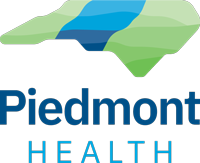Relax your way to lower blood pressure
The easiest way to lower blood pressure is by popping a pill. It takes just a few seconds and you are finished. But pills cost money and often have side effects. Fully relaxing your body and your mind for a few minutes a day could lower your systolic blood pressure (the top number of a blood pressure reading) by 10 points or more—at no cost, and with no side effects.
Researchers with the Benson-Henry Institute for Mind-Body Medicine at Harvard-affiliated Massachusetts General Hospital compared a stress management technique called the relaxation response with education about lifestyle changes such as sodium reduction, weight loss, and exercise. They found:
- Blood pressure decreased more in the relaxation response group
- 32% of the volunteers in that group were able to eliminate one blood pressure medication and still keep their blood pressure under control, compared with 14% of the lifestyle group.
The relaxation response, developed by Harvard’s Dr. Herbert Benson, has been shown to reduce heart rate, blood pressure, breathing rate, and muscle tension. Here’s how to do it:
- Select a word (such as “one” or “peace”), a short phrase, or a prayer to focus on.
- Sit quietly in a comfortable position and close your eyes.
- Relax your muscles, progressing from your feet to your calves, thighs, abdomen, and so on, up to your neck and face.
- Breathe slowly through your nose, silently saying your focus word, phrase, or prayer to yourself as you exhale.
- When other thoughts come to mind, don’t worry. Simply return your attention to your focus word, phrase, or prayer.
- Do this for 10–20 minutes.
- Sit quietly for a minute or so, then open your eyes.
- Practice the relaxation response once or twice a day.
Blood pressure basics
Blood pressure is the force that a wave of blood propelled from the heart exerts on the arteries. It is measured at two points; each measurement is recorded in millimeters of mercury (mm Hg).
Systolic pressure gauges the pressure in the arteries at systole (SIS-tuh-lee), the instant when the heart contracts and pushes a wave of blood along the arterial tree (think “s” for squeeze). It is the top number of a blood pressure reading.
Diastolic pressure reflects the pressure during diastole (die-AS-tuh-lee), the brief period of relaxation between beats. It is the bottom number of a blood pressure reading.
Hypertension is the formal name for high blood pressure.
| Blood pressure categories | |||
| Systolic | Diastolic | ||
| Normal (optimal) | less than 120 | and | less than 80 |
| Prehypertension | 120 – 139 | or | 80 – 89 |
| Hypertension | 140 or higher | or | 90 or higher |
Original Article Can be found here
